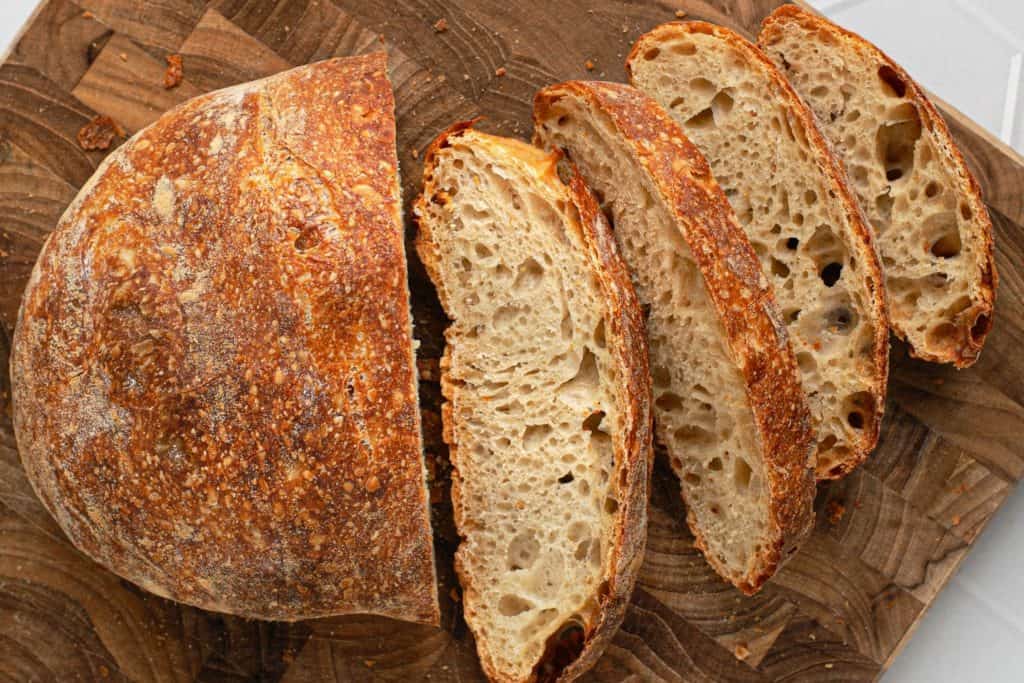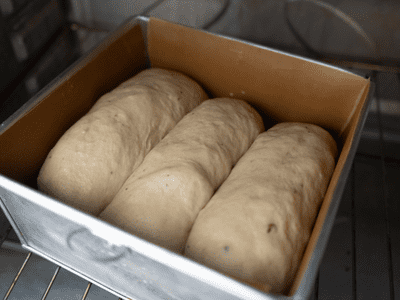Why is temperature bread important? The best way to tell if your loaf is done is to take its internal temperature. Our Test Kitchen explains how to properly temperature your dish and when you can safely remove it from the oven.
Bread baking is a labor of love. You mix, knead, proof, punch down, and proof again. It takes a lot of effort before your loaf even goes into the oven. The final hurdle is baking bread, which can be difficult for inexperienced bakers. Bread baking temperature is very important. If you overbake the bread, it will taste burnt, but if you underbake it, it will be an underbaked, sticky mess on the inside. Internal temperature checks are the best way to avoid overbaked or underbaked bread.
How to Tell if Your Bread is Done

How can you tell if something has been completed if you can’t look inside? When it comes to bread, there are a few things you can do to ensure that your lovely loaf is perfectly baked every time!
- aesthetically – The more you bake, the better you’ll be at judging how a loaf of bread should look when it’s almost done. The crust should be mostly dry, very firm, and a deep golden brown color with darker spots here and there. Allow a few more minutes if the crust is very pale. The good recipes usually describe how the bread should look at the end of cooking, so you can use that as a guide until you’re more familiar with the loaf.
- Tap the Bottom – Remove the loaf from the oven and turn it upside down, removing it from the pan if making a sandwich loaf. Thump the bottom of the loaf with your thumb, as if you were striking a drum. When the bread is done, it will sound hollow. If you’re new to this method, try it every five minutes near the end of baking to hear how the sound changes.
- Determine the Internal Temperature: Insert an instant read thermometer into the center of the loaf. (You can reduce the visual evidence by going at an angle and through the side or bottom!) Most baked bread temperature gets to around 190°. Breads with butter, eggs, or milk are done when the internal temperature reaches 200°.
If you’re ever in doubt, it’s better to overcook the loaf than undercook it. An additional five minutes will not burn the crust, and the worst that will happen is that your bread will be a little dry. But dry is preferable to unbaked!
Also, if your loaves are consistently over- or under-baked, use an oven thermometer to check the temperature of your oven. If your oven temperature is incorrect, it may affect the cooking times of your loaves. You can adjust the temperature gauge yourself, but if the temperature is inconsistent or off by more than 50 degrees, consult a professional.
Why is temperature bread important?

Do you consider the temperature of the water you use in your dough? Is tepid water cold, warm, or hot?
How warm is the water if it’s tepid? Tepid is defined as slightly warm or lukewarm in the dictionary. Tepid, as an adjective, means lacking enthusiasm, half-hearted, indifferent, or cool. I believe you’d agree that this is, at best, a hazy term that should be discarded. YET, there are numerous bread recipes that call for lukewarm water. What is the definition of tepid?
This has been tested in many of my bread-making classes. I pour tap water into a jug and ask participants to describe the temperature. I inquire whether the water is cold, tepid, warm, or hot. Each person’s response is unique. If we each follow the recipe that calls for tepid water, the results will differ because we’ll be using different temperatures of water.
What is the significance of temperature?
The final temperature of a dough after mixing is one indicator that the dough has been sufficiently mixed to allow the yeasts to develop. If the temperature is too low, the dough will not rise properly; if it is too high, the dough will over-ferment. The ideal temperature range is 24°C to 26°C (75 to 78F).
Checking the temperature of your dough

Mix by hand or in a machine using a tried-and-true bread recipe or one of my bread recipes. This applies whether you’re baking sourdough or yeasted bread.
The optimal temperature for fermenting and proofing bread dough, according to Harold McGee, is 85°F (29°C). Check the temperature after kneading the dough by hand for at least 10 minutes. Continue kneading if the temperature has not reached 24°C/77°F.
If you’re using a stand mixer, planetary mixer, or spiral mixer, mix the dough on low for about 5 minutes, then on high for another 5 minutes. The power of the motor in your stand mixer will determine this. At this point, check the temperature. If necessary, mix for another minute and check again. The temperature should be between 24°C and 26°C/77F.